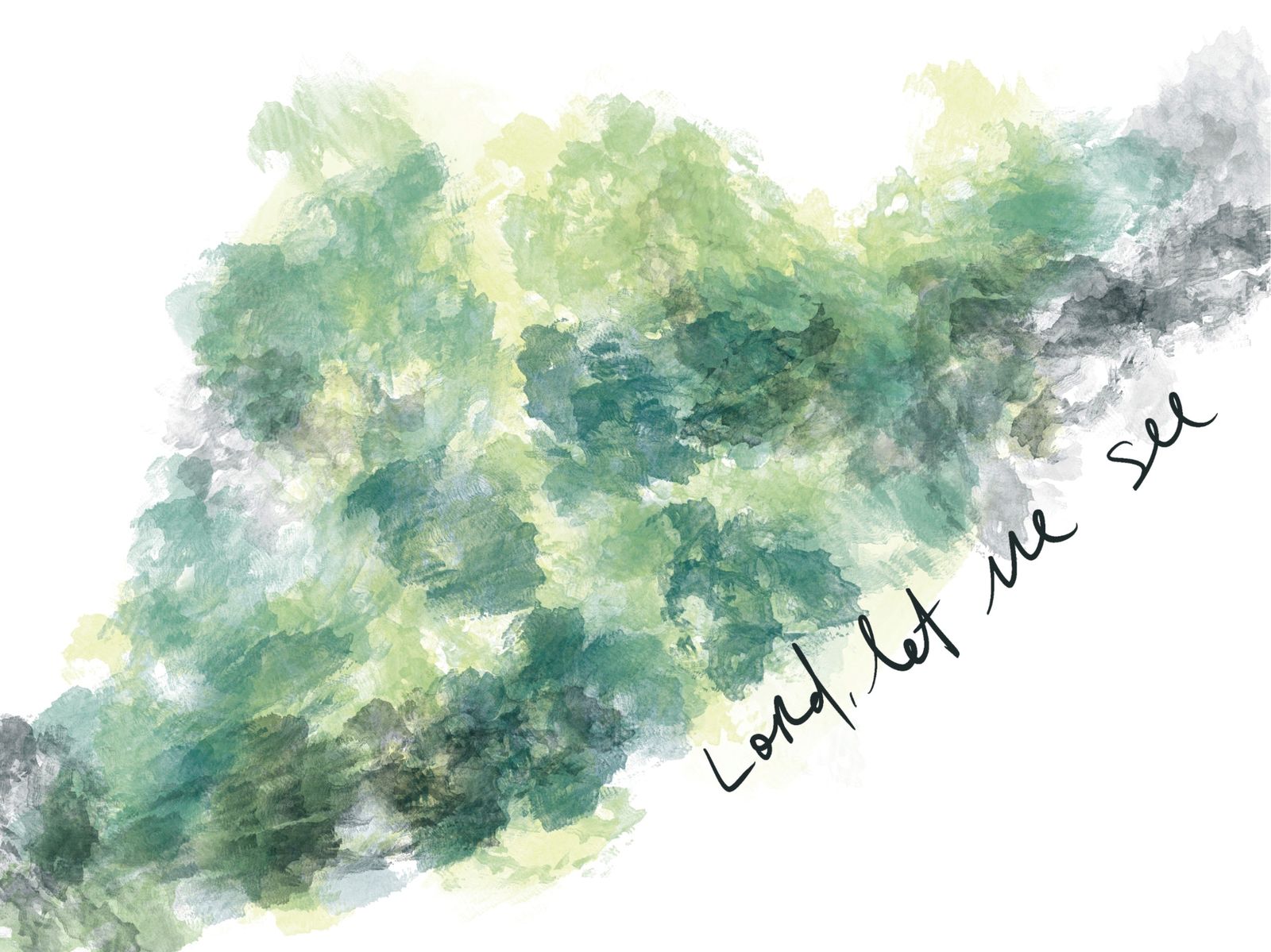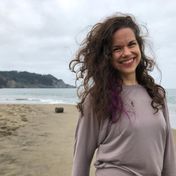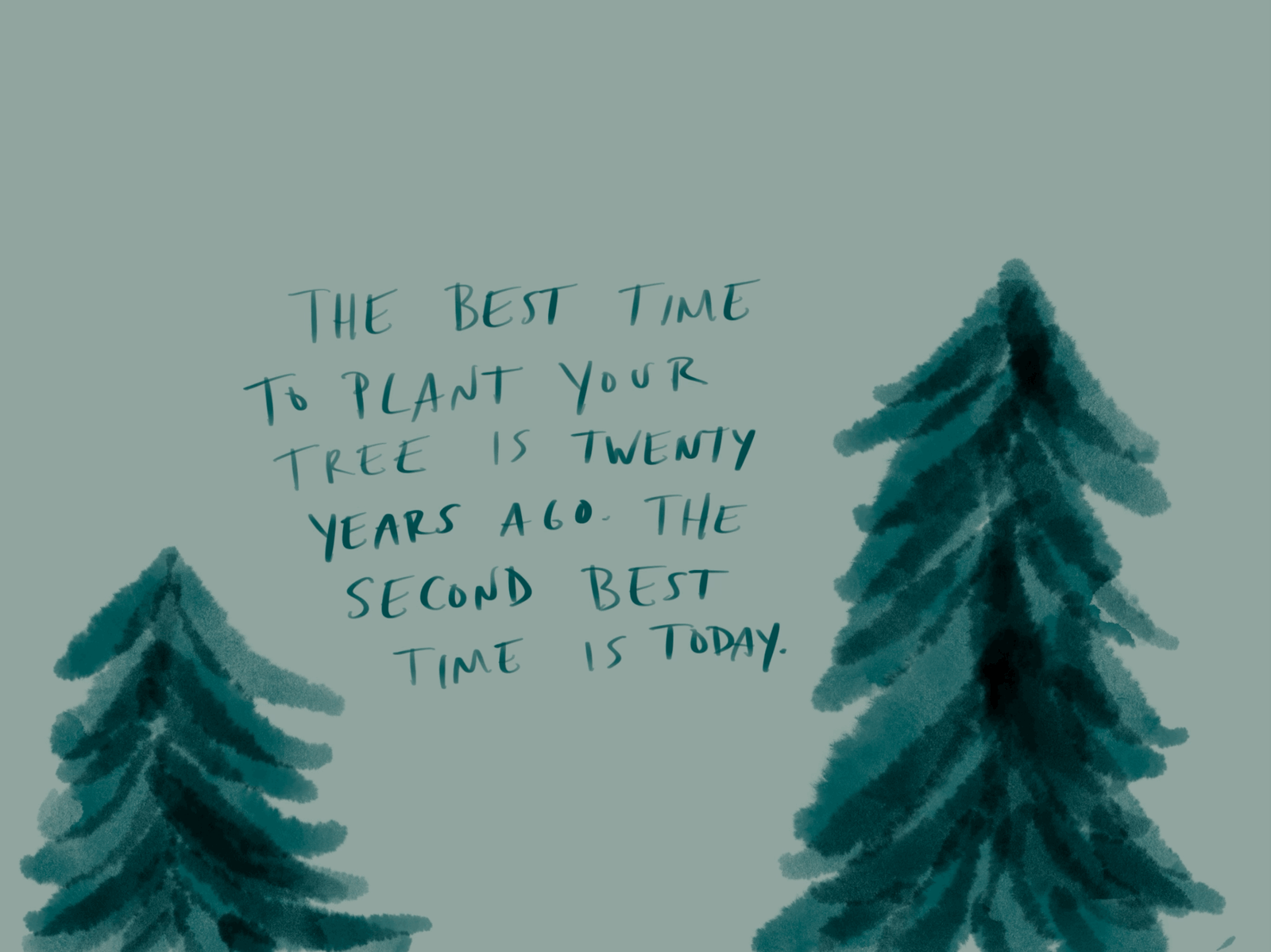The children and I have sat outside in midsummer before, trying to identify all the shades of green we saw in the forest. Once we tried to name them. We got five or ten names in before a cloud rolled across the sun and all the greens we had named vanished and were replaced by deeper, much different tones.
"Mama, I don't think we can count all the shades of green in the forest," one said with finality. "There are just too many."
The cloud cover cleared then, as if on cue, turning dark shades of hunter green into bright chartreuse in an instant. Shadows of leaves danced in a pool of dappled light at our feet.
"There are just too many," I said.
The human eye can perceive about 1 million colors. Our eyes are trichromatic, meaning we see using three main colors: blue, green, and red. The 1 million different colors we can discern are a combination of those main three. Green, sitting in the middle of our visual spectrum, is the easiest color for eyes to see and we see it in more shades than any other color. This is the reason night vision goggles are green-hued. We were designed to look carefully at a bright green world.
I often pray for eyes that see. I am convinced that the most potent prayers are the shortest: "Lord, let me see." "Lord, here I am."
When my sons were little and they painted trees, it was one primary preschool green circle stabbed with bright candy red apples sitting atop a standard brown trunk. Now, with a little more skill and patience, they layer the hues of green into the tree, first light, then dark, then darker. They study the light and how it moves through the forest. Carefully, they get out their tiny detail brushes and put in shadows on trunks, extending into fields. Now their pictures have depth.
In art history, the transition from the Dark Ages to the Renaissance is marked by the introduction of perspective: a world with depth and shadow. Before, all drawing, cave paintings, religious icons, were completely flat. There was no attempt to show a dimensional world. Then in the 12th through 14th century, Italian artists and architects like Michelangelo began to master perspective and spark a new drive to pursue beauty.
When I pray for eyes that see, what I want is to see people the way that Jesus did: in all their depth, shadow, shade, in 1 million colors. I want to see them the way I see a thousand shades of green in a summer forest. Alive, breathing, intricate. Shifting in the changing light of life. I want to see myself clearly too. Clear-sightedness, in any process, is the first step toward building a better future. In the scientific method, we begin with observation. In the design-build process, we begin with a field study. You can't see where you want to go if you can't see where you are.
Asking God for clear eyes is a risk, an invitation that comes with humility and vulnerability. It's asking to see not what we think should be there, not what we want to be there, not what we're afraid will be there, but what is actually, truly there in all it's nuance, complexity, and naked honesty. Since the Garden, humans haven't been so comfortable with naked honesty.
Blindness is easier, covering up is easier. It requires less time and less work, less excruciating honesty. It's easier to close our eyes to certain truths, or certain aspects of truths and live in a constrained and invented reality that suits us, even if that reality is fundamentally toxic for us. Maybe we live with eyes shut toward our bad impacts in a particular relationship or situation. Maybe we live with our eyes shut toward the abundant love God has for us and choose to live in shame instead. When we choose to live with our eyes closed and therefore blinded, we surrender the perspective and beauty God has for us in our rebirth. We return willingly to the dark ages.
When Jesus spits in the eyes of a blind man in Mark 8, he asks him,
“Do you see anything?”
He looked up and said, “I see people; they look like trees walking around.”
Once more Jesus put his hands on the man’s eyes. Then his eyes were opened, his sight was restored, and he saw everything clearly.
Obviously this blind man must have once been somewhat sighted, he knew what trees looked like. Or perhaps he only knew what a tree was from touch and like a toddler learning new words, associated a word that seemed to fit, even if it wasn't quite right. Jesus, like a parent, understood perfectly because he was with him, fiercely present in the moment. Like the progression of art history: first the blind man saw in dim, flat shadow, then in clear dimensions.
So it goes with us too, when we ask for eyes that see. There is a moment of unveiling, of hands lifting from our eyes. A proper apocalyptic moment.
In the Greek, apocalypse didn't mean Earth-destroying meteors and plagues and four horsemen. It simply meant to uncover, to reveal, as Eugene Peterson points out in his book Reversed Thunder: The Revelation of John and the Praying Imagination, there's an apocalypse when one uncovers a lid from a pot of stew boiling on the stove on a winter evening. We smelled the stew, we knew it was there, but it wasn't uncovered, it's fullness wasn't revealed until we moved the lid. The blind man in Mark 8 had a proper apocalypse with Jesus: first he saw dimly, then Jesus lifted his hands and unveiled the entire sighted world in all it's shades of green.
When we ask for eyes to see, this is what happens to us too. Maybe slowly. Maybe quickly. But inevitably, over and over again. God is waiting to reveal himself in our lives, in every single little moment. Through the people "walking like trees" through our lives. God is waiting for us in each moment, each encounter, inviting us into beauty and fullness and depth. He wants us to have a continuous apocalypse of who he is. He offers us perspective in our flat, little worlds. He offers us the radical naked honesty, clarity, and connection of the Garden.
If only we're brave enough to ask for eyes to see.





